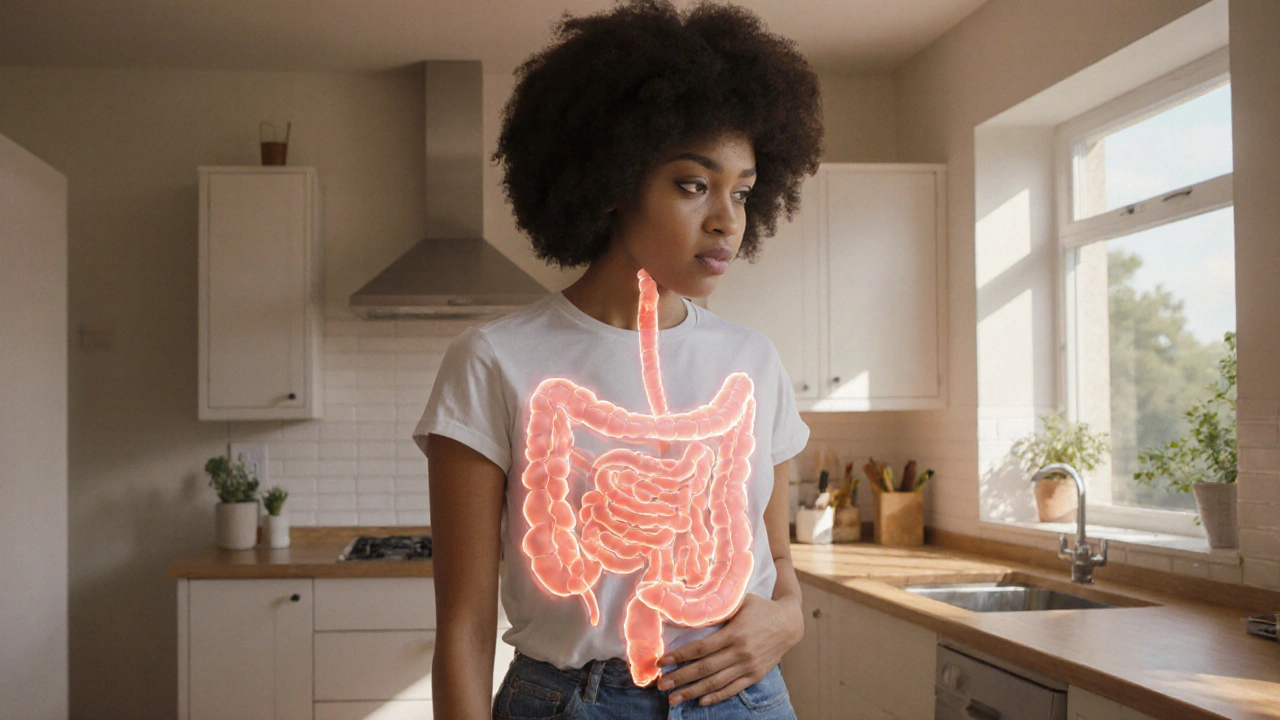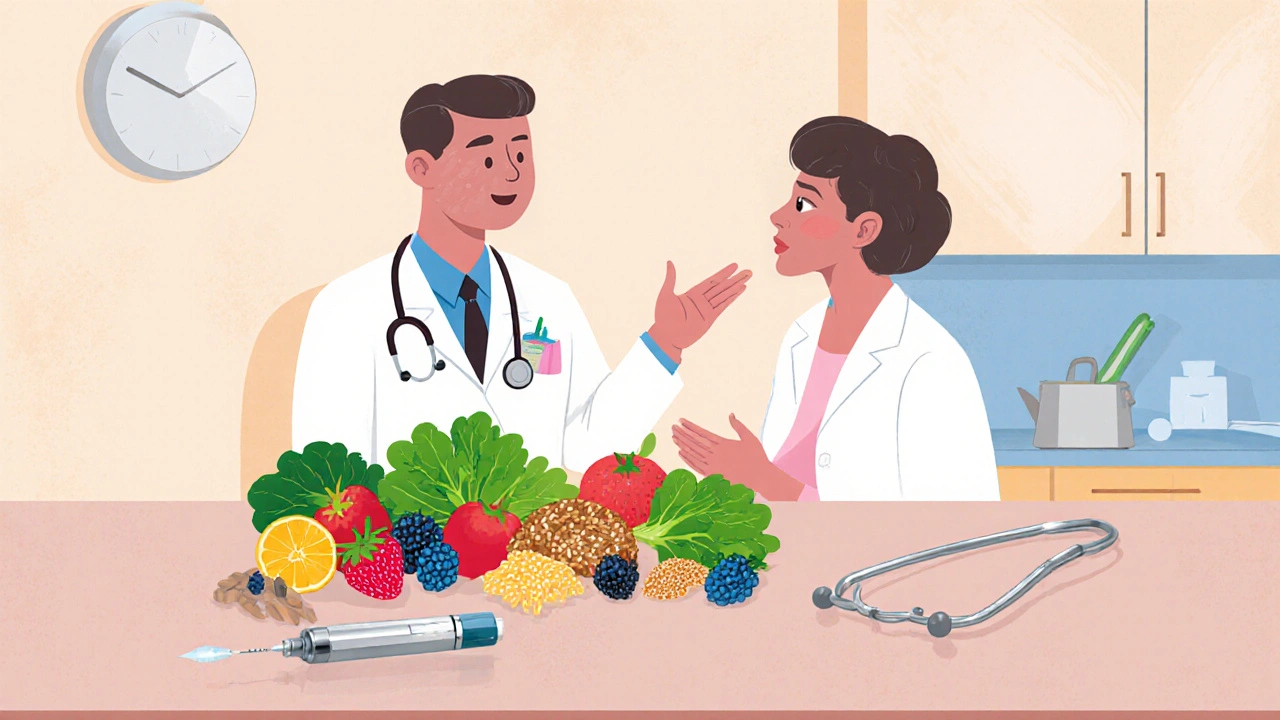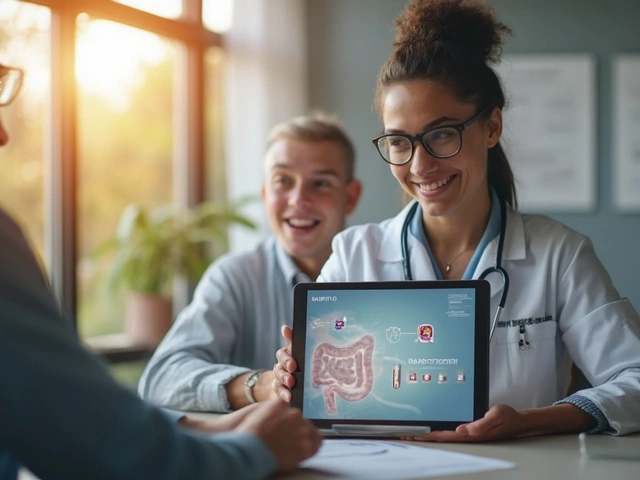
IBD Symptom Checker
This tool helps identify possible early signs of Inflammatory Bowel Disease (IBD) by evaluating persistent stomach ache and related symptoms.
Check for Potential IBD Symptoms
Answer the following questions to assess your risk:
Quick Takeaways
- Persistent stomach ache can be an early sign of Inflammatory Bowel Disease (IBD).
- Key triggers include genetics, gut microbiome imbalance, stress, and certain medications.
- Watch for red‑flag symptoms: blood in stool, unexplained weight loss, night‑time pain.
- Prevention focuses on a balanced diet, stress management, and regular medical screening.
- Treatment options range from anti‑inflammatory drugs and biologic therapy to lifestyle changes like a low‑FODMAP diet.
When a stomach ache is a pain or discomfort in the abdominal area that lasts longer than a few days, it’s easy to blame indigestion or a viral bug. But for many people, that lingering ache is a warning sign of Inflammatory Bowel Disease (IBD), a chronic condition that includes Crohn’s disease and ulcerative colitis. Understanding why the pain shows up, how to stop it from getting worse, and what treatments actually work can save you months of unnecessary suffering.
Understanding the Link: Why Stomach Ache Signals IBD
IBD is an umbrella term for two main disorders that cause inflammation of the digestive tract. Crohn's disease is a type of IBD that can affect any part of the gastrointestinal tract, from mouth to anus, while ulcerative colitis is a form of IBD limited to the colon and rectum. Both conditions trigger immune‑mediated inflammation, which irritates the lining of the gut and creates the ache you feel.
The gut wall is packed with nerves, so even mild inflammation can register as a sharp or cramping pain. When the inflammation is chronic, the pain becomes recurrent, often worsening after meals or during periods of stress. This is why many patients describe their IBD‑related complaint simply as "stomach ache" without realizing a more serious disease lies underneath.
Common Triggers and Underlying Causes
While the exact cause of IBD remains elusive, research points to a trio of interacting factors:
- Genetics: Over 200 gene variants have been linked to higher IBD risk, especially mutations in the NOD2 gene for Crohn’s disease.
- Gut microbiome: An imbalance between beneficial and harmful bacteria-known as dysbiosis-can trigger the immune system to attack the gut lining. Studies show IBD patients often have reduced levels of Faecalibacterium prausnitzii, a protective microbe.
- Environmental stressors: Smoking, poor sleep, and chronic stress increase cortisol, which can flare up intestinal inflammation.
Medications such as non‑steroidal anti‑inflammatory drugs (NSAIDs) also irritate the gut, sometimes precipitating a flare. Even a high‑sugar diet can feed harmful bacteria, worsening dysbiosis.
Spotting Red Flags: When a Tummy Pain Needs a Doctor
Most occasional stomach aches are harmless, but some symptoms demand a medical work‑up:
- Blood or mucus in stool.
- Unexplained weight loss (>5% of body weight in 6 months).
- Persistent diarrhea (more than three loose stools a day for over a week).
- Night‑time pain that wakes you up.
- Fever or joint pain accompanying abdominal discomfort.
If you notice any of these, schedule a visit with a gastroenterologist. The doctor will likely order blood tests for inflammatory markers (CRP, ESR), stool studies to rule out infection, and an imaging study. The gold‑standard diagnostic tool is a colonoscopy, which lets the physician directly view the colon lining, take biopsies, and grade inflammation.

Prevention Strategies You Can Start Today
While you can’t change your genetics, you can influence the other risk factors. Here are three evidence‑based habits that lower the chance of an IBD flare:
- Adopt a gut‑friendly diet: The low‑FODMAP diet-limiting fermentable carbs like onions, garlic, and certain fruits-has been shown to reduce bloating and pain in up to 70% of IBD patients.
- Support a healthy microbiome: Incorporate probiotic‑rich foods (yogurt, kefir, kimchi) and prebiotic fibers (oats, bananas, asparagus) to feed beneficial bacteria.
- Manage stress: Techniques such as mindfulness meditation, regular exercise, and adequate sleep (7‑9hours) cut cortisol spikes that can provoke inflammation.
Regular screening is another preventive measure. If you have a family history of IBD, start colonoscopy surveillance at age 30 or ten years before the earliest family diagnosis, whichever comes first.
Treatment Options: From Medication to Lifestyle Tweaks
Once IBD is diagnosed, the treatment goal is to achieve remission-no symptoms and healed gut lining. Therapies fall into three main categories:
- Anti‑inflammatory drugs: 5‑ASA compounds (mesalamine) work well for mild ulcerative colitis, while corticosteroids (prednisone) are used for short‑term flare control.
- Immunomodulators: Azathioprine and methotrexate suppress the immune response, helping maintain remission over months.
- Biologic therapy: Biologic therapy includes anti‑TNF agents (infliximab, adalimumab) and newer IL‑12/23 inhibitors (ustekinumab). These target specific inflammatory pathways and have transformed severe IBD management.
Medication isn’t the whole story. Lifestyle adjustments-continuing a low‑FODMAP or Mediterranean diet, staying hydrated, and engaging in gentle exercise-reduce the frequency of flares. For patients with strictures or fistulas (common in Crohn’s), surgical options like laparoscopic resection may be necessary.
Comparing Crohn’s Disease and Ulcerative Colitis
| Aspect | Crohn's Disease | Ulcerative Colitis |
|---|---|---|
| Typical Location | Any part of the GI tract (mouth to anus) | Colon and rectum only |
| Pattern of Inflammation | Patchy, can skip sections ("cobblestone" appearance) | Continuous, starts at rectum and moves upward |
| Common Symptoms | Abdominal pain, weight loss, fistulas, strictures | Bloody diarrhea, urgency, abdominal cramping |
| First‑line Medication | 5‑ASA (if colonic involvement), steroids, immunomodulators | 5‑ASA (mesalamine), steroids |
| Biologic Preference | Anti‑TNF agents, integrin blockers | Anti‑TNF agents, JAK inhibitors |
| Surgical Cure | Rare; surgery often for complications | Colectomy can be curative |
Understanding these nuances helps you and your doctor choose the right medication and monitoring plan. For example, a patient with primarily colon‑only disease might respond well to mesalamine, while a person with ileal involvement often needs a biologic.
Putting It All Together: A Personal Action Plan
Here’s a simple checklist you can follow the next time a stomach ache lingers longer than a couple of days:
- Track your symptoms: Note pain location, intensity, triggers, and any accompanying signs (blood, fever, weight loss).
- Review diet: Cut high‑FODMAP foods for two weeks and note any improvement.
- Manage stress: Try a 5‑minute breathing exercise daily; record mood changes.
- Schedule a doctor visit: Bring your symptom log; ask about blood tests, stool studies, and whether a colonoscopy is warranted.
- Discuss treatment options: If diagnosed, work with your gastroenterologist to decide between 5‑ASA, immunomodulators, or biologics based on disease severity and lifestyle.
Following this plan doesn’t guarantee a cure, but it empowers you to catch IBD early, avoid unnecessary complications, and keep your daily life moving forward.
Frequently Asked Questions
Can a stomach ache be the only symptom of IBD?
Yes. In many early cases, chronic abdominal pain is the first-and sometimes only-sign that the gut is inflamed. However, most patients eventually develop additional clues such as changes in bowel habits, blood in stool, or weight loss.
Is a low‑FODMAP diet safe for long‑term use?
It’s effective for short‑term symptom control, but because it limits many fruits and whole grains, most nutritionists recommend transitioning to a balanced Mediterranean diet after flare reduction.
Do probiotics cure IBD?
Probiotics can help restore a healthier gut microbiome and lessen mild symptoms, but they are not a standalone cure. They work best when combined with medication and dietary changes.
When is surgery necessary for Crohn’s disease?
Surgery is considered when strictures cause bowel obstruction, fistulas become problematic, or medication fails to control inflammation. It relieves symptoms but does not eradicate the disease.
How often should someone with IBD get a colonoscopy?
For most patients, a colonoscopy every 1-3years is recommended to monitor disease activity and screen for colorectal cancer, especially if the disease has been present for more than 8-10years.





